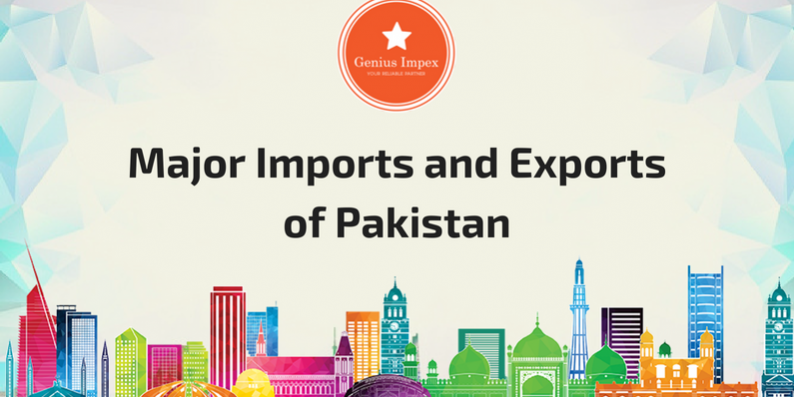Imports play a pivotal role in shaping the economic landscape of any nation. In the case of Pakistan, imports are not just a financial transaction but an essential lifeline that fuels the country's growth, development, and prosperity. In this article, we will delve into the intricate world of imports in Pakistan, exploring their significance, key categories, trends, and the impact on the nation's economy.
Exports Of Pakistan are a cornerstone of any nation's economic development, and Pakistan is no exception. The export sector plays a crucial role in stimulating economic growth, generating foreign exchange, and promoting international trade relationships.
The Significance of Imports
Imports are the goods and services that a country purchases from other nations. In Pakistan, imports are a lifeline for a variety of reasons:
Economic Growth: Imports contribute significantly to Pakistan's economic growth by providing essential raw materials, intermediate goods, and capital machinery for various industries. These inputs are crucial for manufacturing, infrastructure development, and technological advancement.
Diversity of Goods: Imports provide consumers with a diverse range of products and services that are not readily available or cost-effective to produce domestically. This includes everything from electronics and automobiles to pharmaceuticals and luxury goods.
Energy Security: Pakistan heavily relies on imported petroleum products to meet its energy needs. Without these imports, the country's energy sector would be severely hampered, affecting everything from transportation to industrial production.
Murtaza Bhutto was a prominent Pakistani political figure and a member of the Bhutto family, one of the most influential and politically active families in Pakistan's history.

Key Categories of Imports
Pakistan's imports can be categorized into several key areas:
Machinery and Equipment: These imports include industrial machinery, electrical equipment, and vehicles. They are vital for manufacturing and infrastructure development.
Energy Products: Pakistan is heavily dependent on imported oil and gas to meet its energy needs. These imports ensure the smooth functioning of the economy.
Raw Materials: Importing raw materials, such as metals, textiles, and chemicals, supports various industries, including the textile and construction sectors.
Consumer Goods: Imported consumer goods range from electronics and household appliances to clothing and luxury items.
Agricultural Products: To meet domestic demand and support its agriculture sector, Pakistan imports items like fertilizers, pesticides, and edible oils.
Trends in Pakistan's Imports
Over the years, Pakistan's import landscape has undergone significant changes:
Changing Partners: Pakistan's major trading partners include China, the United Arab Emirates, and Saudi Arabia. The China-Pakistan Economic Corridor (CPEC) has further solidified the economic relationship between the two countries.
Sectoral Shift: Pakistan has been focusing on diversifying its imports, with increased investments in machinery, electronics, and pharmaceuticals to reduce its reliance on a few key imports.
Energy Imports: The country has been trying to reduce its energy import bill by exploring alternative energy sources like renewable energy and liquefied natural gas (LNG) imports.
Impact on the Economy
The impact of imports on Pakistan's economy is multifaceted:
Trade Deficit: Pakistan often faces a trade deficit, where the value of imports exceeds exports. This can put pressure on the country's foreign exchange reserves and lead to economic challenges.
Industrial Growth: Imports of machinery and raw materials have played a pivotal role in boosting the industrial and manufacturing sector. This growth has a cascading effect on employment and economic development.
Consumer Welfare: Imported consumer goods provide a wide array of choices and contribute to improved living standards. However, they can also strain foreign exchange reserves.
Conclusion
Imports are a crucial aspect of Pakistan's economic landscape. They provide the necessary inputs for industrial growth, technological advancement, and improved living standards. However, managing imports effectively, addressing the trade deficit, and diversifying import sources are vital for ensuring long-term economic stability and prosperity. Balancing imports with exports is a key challenge that Pakistan, like many other nations, must navigate as it continues to participate in the global marketplace.







